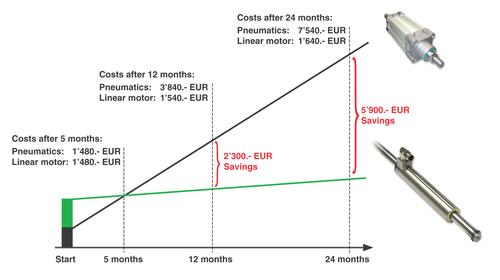Versatile Plastic Diaphragm Check Valves Increase Options in Medical Designs
October 7, 2013

Improvements in the design of medical devices for more streamlined functionality and performance is influenced by a number of critical factors. The research, design, modeling, testing, prototyping, and FDA and EU approvals of new devices, or the integration of changes to existing designs, usually represents a sizable capital investment of resources well before the equipment goes into serial production. Factored into medical device product development are many considerations. This could include equipment size, speed of operation, heat generation, portability, handling of static or kinetic loads, power sources, measuring systems, vacuum and nonmagnetic requirements, sensors, machine controls, component part wear, diagnostics, and patient and operator safety.
A key impetus influencing medical and bioresearch companies to engage upon involved-product development cycles is the opportunity to capitalize technology advances. This could result in better operation, lower costs, higher efficiency, and safer equipment and devices. One of these advances is in plastic tubing inline check valves, specifically diaphragm check valves, used to transfer and manage fluids and gases in mission-critical medical applications.
Versatility in plastic diaphragm check valves
Plastic diaphragm check valves are two-port valves, meaning they have two openings -- one for upstream fluid or gas to enter, and one for the media to exit downstream. They use a flexing silicone diaphragm positioned to create a normally closed valve (see Figure 1). Pressure on the upstream side must be greater than pressure on the downstream side by a designated amount, known as the pressure differential, for the check valve to open, allowing flow. Once positive pressure stops, the diaphragm automatically flexes back to its original closed position.

To ensure a high level of safety, medical OEM designers rely on air, gravity, and anti-siphon plastic diaphragm check valves to automatically control the directional flow of fluids and gases. This functionality helps to prevent backflow and provides a high level of assurance of proper operation by end users (see Figure 2).

Plastic diaphragm check valves are more often being used in conjunction with medical devices for a wide spectrum of surgical operations, interventional cardiology, radiology procedures, and pharmaceutical mixtures. A growing application is with endoscopic procedures for medical examinations of gastrointestinal (GI) tract organs and structures, such as the bladder, intestines, and stomach. The endoscope, with the aid of a fiber-optic camera, lets the operator view and retrieve a small sample (biopsy) of the area being examined, to more closely view the tissue under a microscope. Here, diaphragm check valves serve a critical function by simultaneously facilitating two precision activities -- irrigating the incision, such as with a saline solution, and aspiration, by suctioning to remove blood from the surgery area and provide a cleaner view of the procedure. The plastic diaphragm check valve permits the flow path to go either way.
This versatility of plastic diaphragm check valves is permitted to a large degree by their ability to operate in any spatial orientation, to prevent the free flow of fluids or gases under gravity. During a medically invasive procedure, the ability to defy gravity while performing a precision aspiration or irrigation activity without interrupting the fluid or gas flow, is a critically important benefit. A one-directional flow without backflow is an attribute that plastic diaphragm check valves are uniquely designed to deliver.
Bi-directional capability of some plastic diaphragm check valves also accentuates their versatility. Value Plastics' DCV series of plastic diaphragm double check valves, for example, is designed to transfer clean fluid from a supply vessel to a use site. The fluid supply vessel is connected to the valve supply port (chimney) using a luer connection or tubing. The fluid is withdrawn from the supply vessel by a syringe or other device that is connected to the aspiration port. When the syringe is compressed, the fluid is transferred through the exit port to the use site without adulterating the fluid.
About the Author(s)
You May Also Like


.jpg?width=300&auto=webp&quality=80&disable=upscale)


